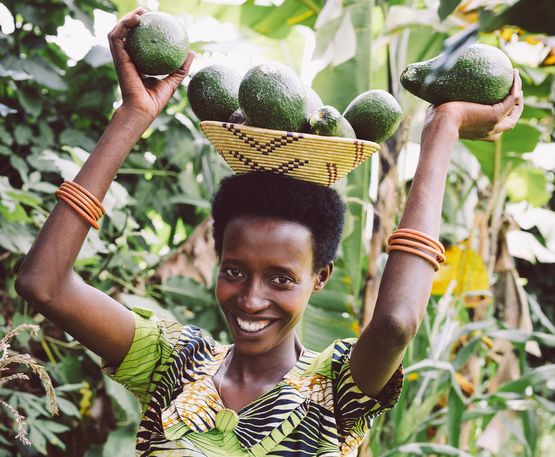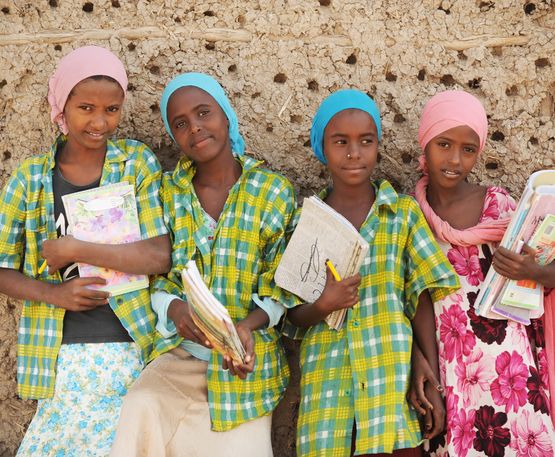Family agriculture provides a good part of the food consumed in the world and still represents an important livelihood base and support network for rural populations. Yet, for many reasons such as land grabbing, climate change, lack of markets and particularly the commercialization and privatization of agriculture by agri-business and its supporters, family farming is threatened.
Just recently I visited a farming community in Guatemala. Sugar cane plantations were encroaching on the community. Land which used to be rented by the farmers of the community to produce food is now used for sugar cane production. Instead of farming the land themselves, the men work as day laborers on the plantations.
In general, this situation is aggravated by the lack of policies in support of family farming in general and women farmers in particular. Thus, family farms are under growing pressure and it becomes increasingly difficult for male and female farmers to gain a living from the land.
Women generally have had an important role in family farming. However, traditionally, there is a clear gender-related division of labor. Typically, in many contexts, men work the soil and women plant. Women are also often in charge of growing food crops in small plots close to the house, of taking care of seeds, and of processing.
According to the patriarchal character of most societies, the role and contributions of men in family agriculture are much more visible and recognized than the role and contributions of women. Women often feel ignored, overlooked and not taken seriously (by men) when they try to share their farming knowledge. Women are still seen by their male family members as well as by many development experts as farmwives rather than true farmers.
However, with regard to the work carried out in agriculture in general, this refers not only to family farming, women comprise (according to FAO) on average 43% of the labor force (less in LA, more in Africa). Women do a lot of work in agriculture, but only own 1 to 2 percent of the agricultural land. This represents a marked imbalance, a result of gender inequalities. It considerably restricts women’s capacities to farm successfully.
According to FAO, if women had the same access to productive resources as men, land amongst them, they could increase yields on their farms by 20 – 30%. This could raise agricultural production in developing countries by 2.5 – 4% and contribute to reduce hunger in the world by 12 – 17%. There is also growing evidence that women’s empowerment and participation improves natural resource management (water and forest) and environmental sustainability.
Organizations such as FAO and World Bank call for the closing of gender gaps to promote the integration of women into market and business aimed at increasing production and revenue. The approach is to facilitate women’s access to production inputs such as chemical fertilizer, improved seeds and pesticides in order to support women’s economical empowerment and participation in sustainable development. In this way, the argument goes, productivity is raised and hunger reduced. Thus, investment in women is good business. This approach turns women into instruments used to fight against hunger and poverty. This approach is not shared by Bread for the World.
The closing of gender gaps is a demand in its own right aimed at the realization of women’s human rights. This is also the context in which women’s role in family farming should be considered and valued.
Since women have to take care of their families and put food on the table, they are interested in producing a variety of food which can be consumed by the family. The use of local resources such as manure and local seeds helps women, who usually have little money, to reduce the cost of production. Thus, women favor farming systems which usually have the following characteristics:
- They are diversified systems (animals, plants, trees), generally characterized by the use of crop rotations, mixed cropping and/or the integration of bushes and trees
- Accordingly, a variety of local seeds are used which often also tolerate extreme conditions such as heat, drought, cold or flooding
- Manure and compost are the main fertilizers used to maintain soil fertility
- Plants and herbs are used to protect or cure plants and animals against insects and diseases
Such systems tend to be quite sustainable.
All this information shows that family farming is to a good degree and of course according to context a domain of women. Thus, gender equality and women’s empowerment contribute to the strengthening of family farming.
This leads us to the question about the policy approaches which are needed from a gender perspective to strengthen family farming.
The realization of women’s human rights is a general demand. Women need access to and control over agricultural and productive resources, especially land as well as equal opportunities than men of participation and decision making. Patriarchal power structures and patterns of thought and behavior need to be challenged.
This is related to the necessity to re-validate the care work and the contribution of women to livelihood and food security.
More specifically, family farming will only thrive if supported by appropriate agricultural policies in favor of food sovereignty which facilitate for example:
- Increased food production based on agro-ecological principles
- Increased marketing and processing preferably at local level
- Improved access to information and services in support of production and marketing
- Improved participation in agricultural research and development, especially regarding seeds
These policies have to be developed and implemented from a gender perspective in order to benefit both women and men equally.
An example from Brazil explains why the gender perspective is so important: The Brazilian Food Acquisition Program (PAA) has been very positive in the sense that it creates demand for a variety of products produced by women in diversified systems. In spite of this strength, it contributes to women’s subordinate status because the holders of the contracts with the program have generally been the men. This has influenced women’s access to the income from the sales and has produced a feeling disempowerment amongst the women.
With regard to improving existing family farming, women need information, training and assistance. This task should be in the hands of female extension workers. Yet, agricultural extension is still a domain of men. Women’s participation is a must in participatory approaches to agricultural development such as Framer to Farmer, Participatory Technology Development or Farmer Field Schools.
There are many traps development experts and policy makers can fall into if the gender perspective is ignored.
It is important to look at the micro level, the family, because there are different people (men and women), different interests, different knowledge and competencies, and different responsibilities within a family. We need to be aware that the family is not a space of equality. This needs to be taken into account in policy development. Participation of women is key also in this context.
Family farming in the future should not further compound existing gender roles and the traditional division of labor. Instead, a transformative approach is needed to strengthen women’s role in family farming.
Beitrag von C. Neuenroth, Brot für die Welt, bei der Podiumsdiskussion im Rahmen des Global Forum for Food and Agriculture über „Familienbetriebe, ertragreiche Böden und widerstandsfähiges Saatgut zur Sicherung der Welternährung von morgen“, Grüne Woche, 19. Januar 2014




